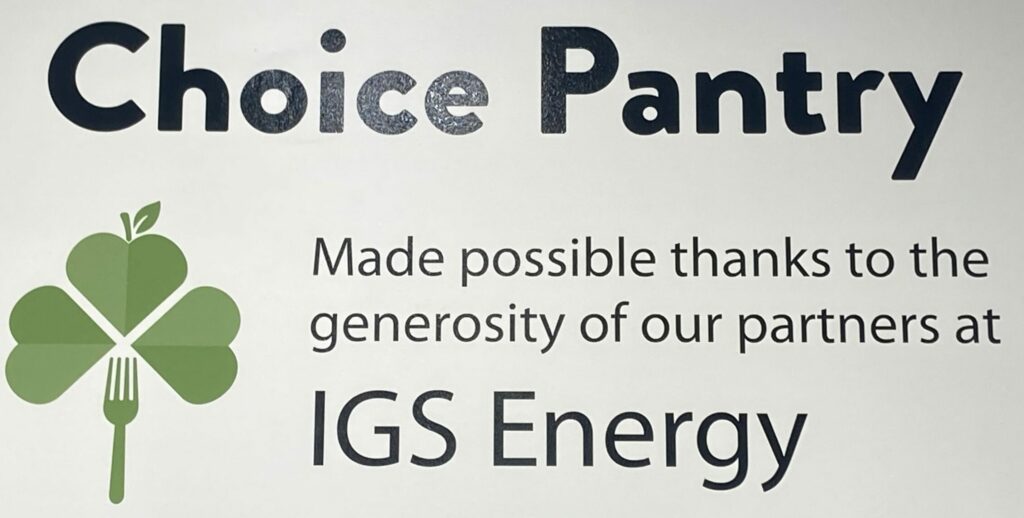
Originally published in the The Columbus Dispatch by Danae King
The Mid-Ohio Food Collective is seeing an “unprecedented” need and record demand across its 680 partner sites in 20 area counties, officials say, with a 40% increase in visits since the same time last year.
From Jan. 1 to May 31, people got food assistance 680,995 times at those sites, according to the collective’s data, with 484,400 visits during the same period in 2022.
“We are shocked and concerned,” said Mike Hochron, senior vice president of communications at the collective. “When we look at the increase of demand for our services. … Each time we think we’ve hit the peak and things will normalize, it goes the other direction.”
Due to factors like inflation and rising food costs, as well as the ending of COVID-era benefits, many families don’t have the resources to make ends meet, Hochron said. And one of the first things to be cut is food, as families can’t just pay half their rent or cut costs when it comes to paying for gas to get to work.
“What’s really unprecedented is the level of need of our neighbors and families, combined with the cost pressures we’re seeing,” he said.
Food prices were up 7.7% in April compared with April 2022, according to the United States Department of Agriculture.
“Families are skipping meals. Seniors are choosing between food and medicine,” Hochron said. “Food is that one thing in a family’s budget where you can cut corners.”
The COVID-19 pandemic’s effect
Pandemic-related enhanced benefits to low-income families ended earlier this year, with an estimated $25 million per month more now coming out of the grocery budgets of low-income families in the collective’s coverage area, Hochron said.
Annually, that’s an estimated $300 million loss for families in food benefits, Hochron said.
Other COVID-related funding and resources that went to food banks have already been used, he said, and no more is planned.
“We knew that the enhanced SNAP benefits during the pandemic were designed to be temporary and it was a matter of when, not if,” Hochron said.
Still, the loss is more than double the collective’s entire yearly food budget. Franklin County, where three of every 10 residents were visiting a pantry at least once, alone lost $13 million of food stamp benefits per month when COVID-19 benefits ended in March.
“In 2020, when the pandemic started, we assumed that would be the worst it would get,” Hochron said, but then, inflation started to rise.
Now, “we’re seeing an ever greater number of our neighbors — seniors and kids, a lot of working families — who just don’t have the resources to make ends meet,” Hochron said.
Are food pantry shelves stocked?
In August, Mid-Ohio Food Collective President and CEO Matt Habash shared a photo of empty warehouse shelves, devoid of the food that feeds those in need.
It was the reality at the time as inflation spiked and remained steadily high, with food banks and food pantries nationwide reporting record demands for their services.
Right now, the warehouse doesn’t look as dire, Hochron said, but food costs for the collective keep rising and the variety of what it can offer to those in need, especially when it comes to fresh produce, has declined.
In June 2022, $1 could be used to purchase $5.22 in groceries by the collective. Today, that number has reduced to $4.89, Hochron said.
“That’s still an incredible impact,” he said. And monetary donations are the most valuable for the collective, due to the spending power of $1 for them.
“If we had more resources, we would be able to provide more food,” Hochron said. “We try really hard to, as efficiently as we can, distribute the food we do have.”
Much of the food is donated or comes through government programs, Hochron said, and the collective tries to buy things to cover the gaps that result. That can include buying potatoes and onions and other core items.
No partner agencies have had to shut down, but some have been forced to offer less help per family than they have in the past, Hochron said.
“Hunger exists in every community across our region,” he said. “The hunger looks a lot like you and me, and it lives just down the street.”
Senate budget may scale back food funding
The Ohio Senate’s proposed budget scales back funding for Ohio’s foodbanks at a time when even keeping it the same would effectively mean a cut in funding due to inflation and rising food costs, Hochron said.
The food collective is calling on Ohioans to ask senators to restore food bank funds and not remove the proposed $15 million a year in hunger relief from the proposed two-year budget.
Hunger locally is at unprecedented levels, Habash said in a prepared release, calling the 40% increase in visits since last year “alarming,” in a statement.
“The Senate funding cut, coupled with a raft of new, harsh limitations to programs that help Ohioans, would do serious, lasting harm to Ohio’s children, seniors, and working families,” he said. “It is time for Ohio’s elected leaders to come together with Mid-Ohio Food Collective and Ohio’s food banks to create a hunger-free, healthier Ohio.”
Food bank CEO:It is ‘more difficult and more expensive to obtain food’
The collective is asking for $50 million per year in the 2024-2025 state biennial budget to purchase food and personal hygiene products for Ohioans in need.
“We are specifically looking at the state budget as a critical chance to make sure, all across the state, that food banks have the resources they need to serve their communities,” Hochron said. “If we were to be funded at the same level, that effectively means less food for people who need it.”
How to help
People should still come and ask for help when they need it, Hochron said.
“That’s why we’re here and it’s our job to help meet that need,” he said. “We can all have a part in being there for our neighbors in a time of need.”
The Mid-Ohio Food Collective runs its own food pantry at 3960 Brookham Drive in Grove City, and services 680 partner agencies — pantries, soup kitchens and after-school programs — in 20 counties, including Franklin County.
Those interested in helping can donate online by visiting mofc.org/ways-to-give or by mail at P.O Box 182883 Columbus, Ohio 43218-2883.
Amid annual count,much is planned this year in Columbus to help the homeless find housing
The pantry is most in need of monetary donations, but those hosting food drives can focus on collecting chili with beans, tuna, canned vegetables, canned meat, soup with vegetables, peanut butter and canned fruit, as well as personal care items such as shampoo and body wash.



